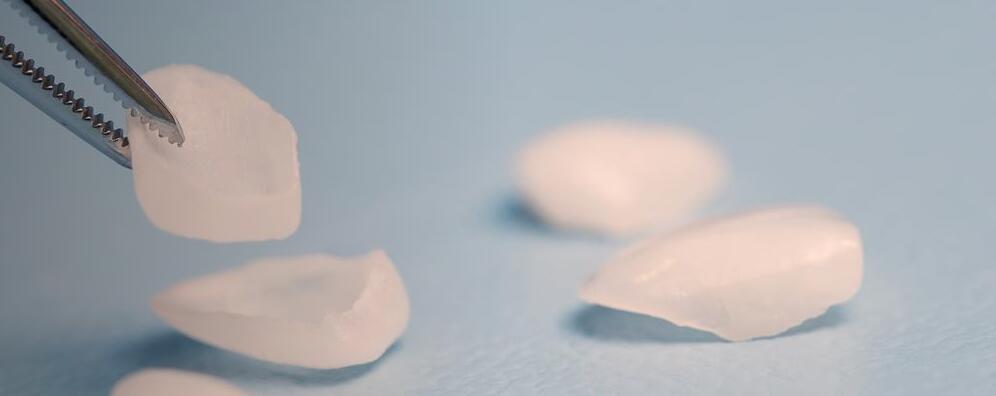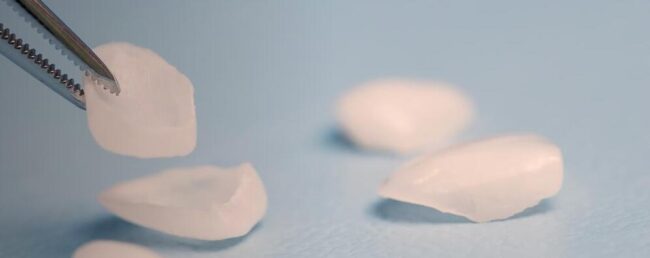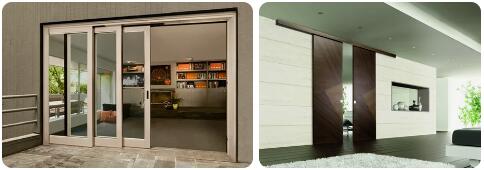A relining is used to improve the hold and fit of an existing dental prosthesis. Therefore, doctors often speak of a denture relining. In principle, the method cannot only be used with a full denture. It is also possible to reline a partial denture. The same applies to telescopic and clasp prostheses. A dental bridge can also be relined.
- Relining is a simple method of restoring the full functionality of a prosthesis.
- A prosthesis relining is already necessary if it wobbles slightly when chewing and / or talking.
- While the doctor adjusts the prosthesis during a single treatment appointment in the case of direct relining, he sends the prosthesis to a dental laboratory in the case of the indirect method.
- The cost of a denture relining is between 100 and 300 euros, with the statutory health insurers providing a fixed allowance of around 50 euros.
What is a relining?
Relining is a relatively simple process that ensures the functionality of a dental prosthesis. The attending dentist applies either a hard or a soft material to the underside of the denture base. This is the side of the denture facing the jaw. In contrast, the doctor does not make any changes to the chewing surface complex.
- Abbreviationfinder: Find definitions of English word – Association and its abbreviations VI.
In which cases is it necessary to reline dentures?
Since the human jawbone changes over time and continues to degrade with age, it can happen that a dental prosthesis no longer fits perfectly at some point. Those affected usually notice this when the full or partial denture wobbles when speaking and / or chewing. In addition, food residues can collect in the bumps, which on the one hand lead to pressure points and on the other hand to inflammation of the gums . It is therefore advisable to have a prosthesis relined even with minor changes. Prompt treatment avoids more serious problems and also restores the wearing comfort of the dental prosthesis.
What types of relines are there?
There are various methods available to medical professionals to reline a denture. Which method is appropriate in each individual case depends primarily on the condition of the patient’s teeth and dentures. In principle, doctors differentiate between the following types of relining:
- Direct relining
- Indirect relining
- Lining that remains soft
Direct relining
The direct relining is mainly used in the area of partial dentures. Often it also serves as a temporary solution. The advantage of this method is that it takes little time. However, there are also disadvantages. On the one hand, many patients find the treatment uncomfortable. On the other hand, food residues collect more easily on the porous lining material, which can lead to problems with oral hygiene.
Indirect relining
Dentists use the treatment method of indirect relining much more often than the direct method. In this case, the fitting of the denture takes place outside the mouth. In fact, the dentist sends the prosthesis to a dental laboratory, which then adjusts the prosthesis. The process enables a very high level of precision, which is also the greatest advantage of the method.
Lining that remains soft
Usually this is either a plastic (polymethyl methacrylate base) or a silicone lining (polysiloxane base). A denture relining made of plastic that remains soft has the disadvantage that it contains plasticizers that evaporate over time. As a result, the material becomes brittle over time. On the other hand, elastic silicone is less color-stable.
The attending physician also sends the dentures to a laboratory to ensure that the relining remains soft. The dental technicians adapt the layer thickness of the relining to the different stress zones. The procedure is therefore similar to that of indirect denture relining.
How does the treatment work and how long does it take?
The course of treatment depends on which procedure is used. In the case of direct relining, only an appointment is required. As a first step, the dentist cleans the denture and roughens the denture base. Then he applies a hardening plastic. He then places the prosthesis in the mouth and fixes it in place until the relining material has hardened. In a final step, he reworks the edges of the denture.
With the indirect method, the dentist first takes an impression, which creates an exact image of the surface structure of the jaw. Then the doctor sends the jaw impression and the prosthesis to a dental laboratory, where appropriate specialists reline the prosthesis. The relined denture is reintegrated during a second treatment appointment.
What are the costs of a relining?
The costs you have to reckon with depend on the size of the prosthesis as well as the chosen treatment method and the relining material. Usually the cost is in the range of 100 to 300 euros.
What does the cash register pay?
The statutory health insurances only contribute to the treatment with a fixed subsidy. This is around 50 euros. The co-payment is between 50 and 250 euros. In the case of privately insured persons , on the other hand, the insurance industry usually pays the costs.
Can the costs be covered with additional dental insurance?
Yes, with additional insurance you can cover yourself against the costs of relining. After all, it is a treatment method that is related to dentures. The exact range of services, however, differs from company to company, so that a comparison of different supplementary dental insurances offers itself .
Is it possible to reline a dental prosthesis yourself?
Basically, a dentist should always carry out the appropriate treatment so that optimal results can be achieved. Incorrect use of the materials can result in serious irritation of the jaw mucosa. In addition, painful pressure points may develop that lead to inflammation. You should therefore absolutely refrain from relining a prosthesis yourself.




